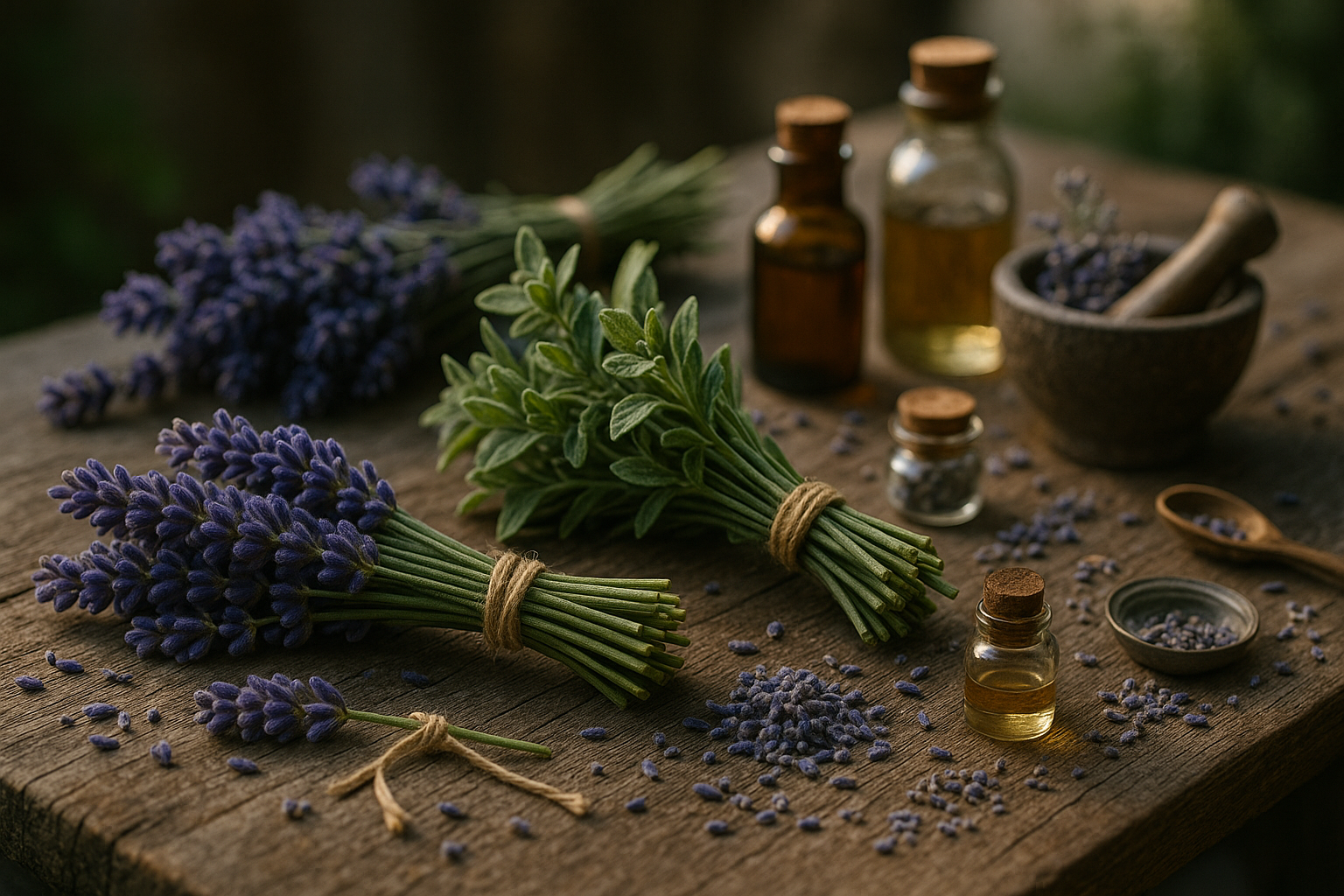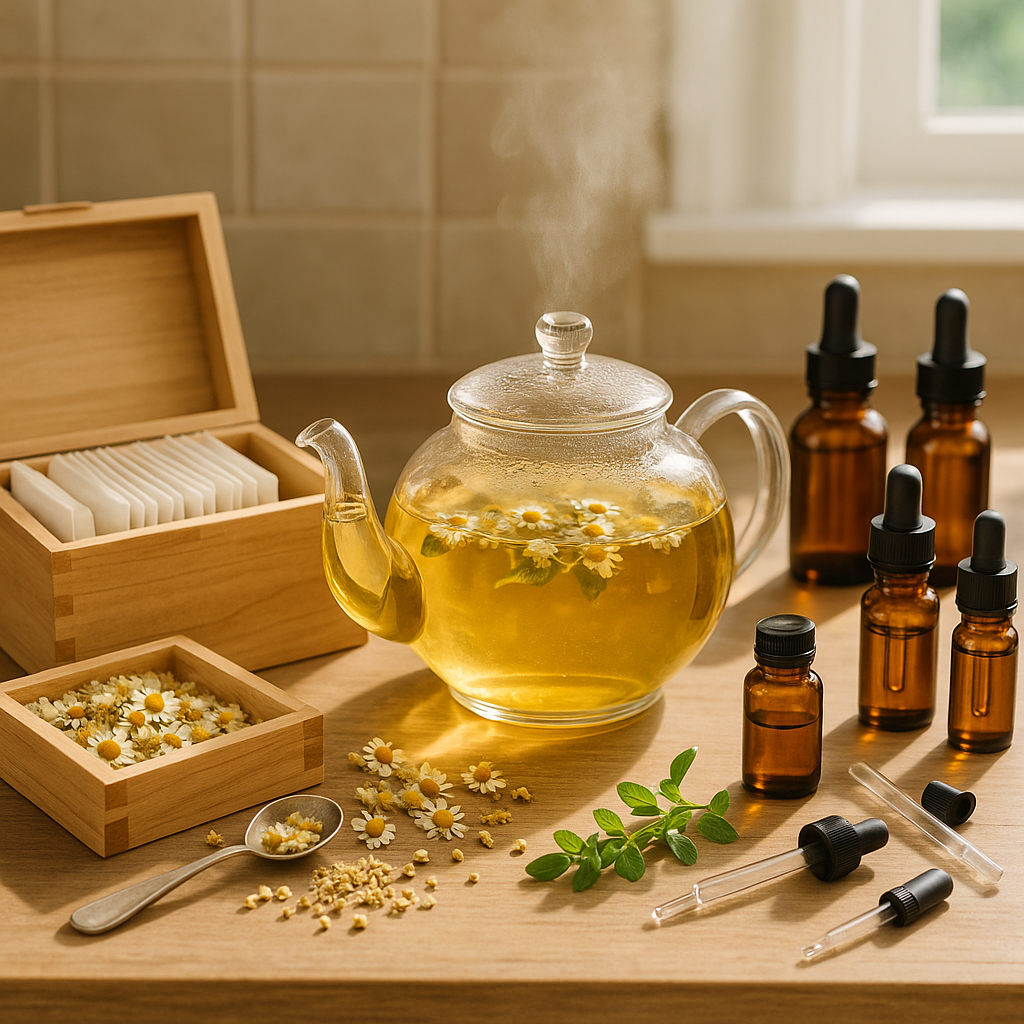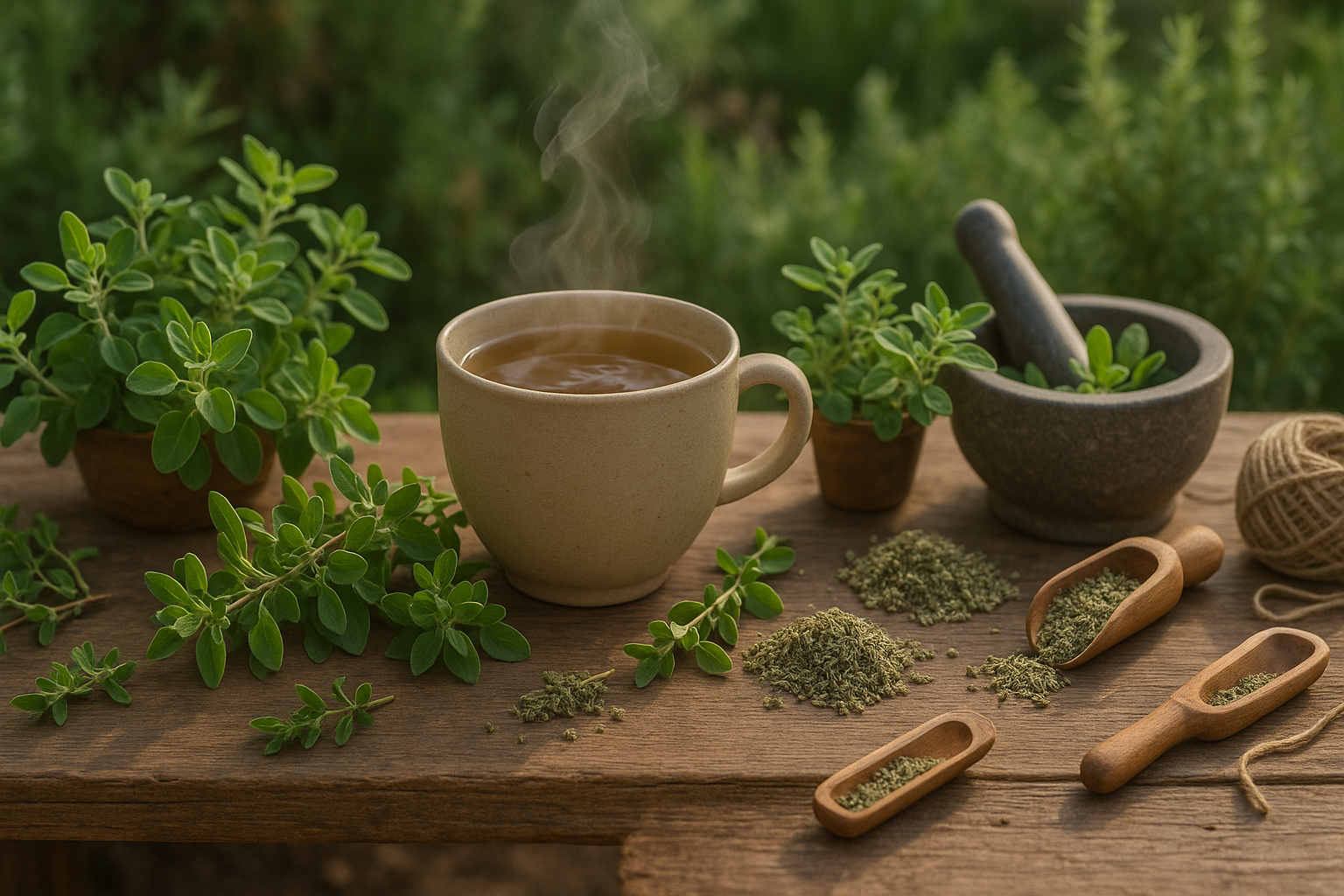Introduction and Overview
Curious about the benefits of marjoram tea and how this fragrant herb can enhance your wellness routine? Marjoram (Origanum majorana), often called sweet marjoram, has been cherished in kitchens and healing traditions for centuries. Native to the Mediterranean region, marjoram is a close cousin of oregano and is valued not only for its culinary charm but also for its gentle, herbal therapeutic qualities.
The leaves and delicate flowering tops of marjoram are typically harvested and dried to brew a soothing tea. This tea has long been a staple in both ancient Greek remedies and modern herbal practices. Whether you’re looking for natural ways to ease digestion, calm a busy mind, or simply enjoy a flavorful alternative to regular teas, marjoram offers a blend of history and wellness in every cup.
Popular across Europe and now gaining traction with wellness enthusiasts worldwide, marjoram tea is making its way into teacups thanks to its subtle taste and impressive list of benefits. Ready to learn more about why this herb deserves a spot in your pantry and how to brew the perfect cup at home? Let’s dive in.
Traditional Uses and Folklore

Throughout history, herbs have woven themselves into the cultural and medicinal fabric of societies worldwide, serving not only as everyday remedies but also as symbols of spiritual power and mystery. Take lavender, for example, cherished by ancient Romans for its cleansing and calming effects. They would scatter its blossoms in bathhouses and use its oil for healing minor wounds.
In Medieval Europe, lavender was believed to ward off evil spirits and protect against disease. People hung bunches by doorways or braided it into pillows to ensure a peaceful night’s sleep. Folklore is filled with tales of lavender tucked into love letters or used in potions to inspire romance and fidelity.
Over time, as modern science identified lavender’s soothing and antimicrobial properties, its reputation shifted from mystical protector to a trusted staple in natural medicine cabinets and beauty routines. This evolution mirrors what’s happened with many herbs: once shrouded in superstition or reserved for healers and wise women, their uses have become mainstream as awareness of their benefits spread.
Today, you’ll find these traditions reimagined—aromatherapy diffusers in living rooms, herbal teas in kitchens, and essential oils in daily self-care rituals—proving that while the folklore may fade, the enduring appeal of herbs remains woven into the rhythms of contemporary life.
Key Health Benefits and Active Constituents
Many plants recognized in traditional medicine have gained scientific validation as research uncovers their active compounds and health benefits. Take turmeric, for instance: used for centuries in Ayurvedic and Chinese medicine to treat inflammation and digestive issues, modern studies now highlight curcumin, its main active constituent, as responsible for anti-inflammatory and antioxidant effects.
Similarly, ginseng root—treasured in Eastern traditions for boosting energy—has been shown in clinical trials to potentially enhance cognitive function and support immune health, largely due to ginsenosides.
When considering garlic, another ancient remedy, scientific evidence backs its cardiovascular benefits, including lowering blood pressure and cholesterol, thanks to sulfur-containing compounds like allicin found in its bulb.
While traditional beliefs often attributed these effects to mystical or holistic properties, today’s research pinpoints measurable biochemical actions.
For most medicinal plants, the parts used—roots for ginseng, rhizomes for turmeric, bulbs for garlic—are rich in these bioactive molecules, which can be consumed whole, as powders, or in extracts.
However, it’s important to note that not every traditional claim is fully confirmed by science; for example, while turmeric is heralded for curing numerous ailments in folk medicine, most clinical data support only its role in managing inflammation.
Always consult healthcare professionals and seek standardized extracts when using medicinal plants, as potency and safety can vary between preparations.
Practical Uses and Typical Dosage

Herbal remedies like chamomile are widely available in several convenient forms, each suited to different preferences and lifestyles. The most popular option is chamomile tea—simply steep one or two tea bags (or a heaping teaspoon of dried flowers) in hot water for about five minutes to create a calming cup, often enjoyed before bedtime.
For those who prefer more concentrated effects, chamomile extracts or tinctures can be added to drinks or taken directly, typically in doses of 1–4 mL up to three times daily, depending on the product’s concentration. Capsules are another option, commonly found in 200–400 mg doses, taken up to three times a day.
When trying chamomile for the first time, it’s wise to start with the lowest recommended dose and observe your body’s response, especially if you have allergies to plants in the daisy family. Always check labels for dosing guidance, and consider consulting your healthcare provider, particularly if you’re pregnant, nursing, taking medications, or planning to give chamomile to children.
Stick with trusted brands to ensure quality, and remember that consistency is key—regular, moderate use often delivers the best results for relaxation and digestive comfort.
Side Effects, Precautions, and Interactions
When considering any supplement or herbal remedy, it’s important to be aware of possible side effects and take appropriate precautions. Commonly reported side effects—based on both scientific research and traditional use—may include mild digestive issues such as nausea, stomach cramps, diarrhea, or headaches. Allergic reactions, though rare, can also occur and may present as skin rashes, itching, or swelling.
For pregnant or breastfeeding women, extra caution is advised. Many herbal supplements have not been thoroughly tested for safety in these groups, and some compounds may cross the placenta or be transferred through breast milk, potentially affecting the baby. Similarly, young children should avoid herbal remedies unless guided by a pediatrician, as their developing bodies may react differently.
People with chronic health conditions or those taking prescription medications should be especially careful, as herb-drug interactions can lead to unwanted effects. For instance, some supplements may interact with blood thinners, antidepressants, or medications for blood pressure—either reducing their effectiveness or increasing side effect risks. Even certain vitamins and minerals, when combined with herbal supplements, may produce unexpected effects.
Always consult with a qualified healthcare provider before starting any new supplement, especially if you are pregnant, breastfeeding, planning surgery, or already taking medications. Carefully reading product labels and starting with a low dosage can also help minimize unwanted reactions. Remember, staying informed and cautious ensures you get the benefits of supplements while reducing potential harm.
Conclusion and Key Takeaways
In summary, this herb offers a range of impressive benefits, from supporting digestion and reducing inflammation to easing mild stress and boosting immune health. People commonly use it in teas, supplements, or as a culinary ingredient, making it easy to add to daily routines.
However, even natural remedies carry risks, so it’s essential to be aware of possible side effects or allergic reactions—especially if you’re pregnant, breastfeeding, or taking other medications. Always consult your healthcare provider before starting any new herbal supplement to ensure it’s safe and appropriate for you.
To keep learning about this herb, consider exploring reputable websites, books, or speaking with certified herbalists for the most up-to-date information. You can also experiment with small amounts in cooking or home remedies to discover what works best for your body—always starting slow and watching for any unusual symptoms.
Making herbs a part of your wellness journey can be empowering, but staying informed and cautious is key to enjoying their benefits safely.
